
Ar (E) 555

The
Arado
555 design resulted from a directive from the Technical Office of
the RLM in early 1944. Arado began design of an aircraft with the
capabilities of high speed and long range. After a meeting on April
20,
1944, it was decided to use a flying wing configuration. The aircraft
was to have a range of 2,980 miles and a top speed of 534 mph. A
variety of weapons were to be carried up to a maximum payload of 8,820
pounds. For defensive armament it was to carry two 30 mm MK 103s in
the
leading edges of the wing and two twin 20mm MG 151/20 in two turrets
which were to be controlled remotely. It was to be powered by six BMW
003A jet engines mounted to the upper fuselage. On December 23, 1944
due to the war conditions and the lack of raw materials all work was
stopped on the project.
The Kit
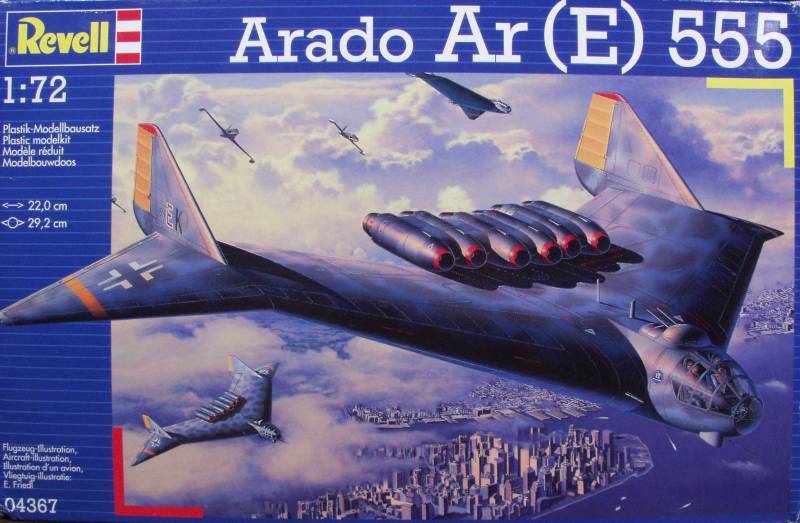
The Revell of Germany kit come in a rather large box that annoyingly opens on the end, with some rather nice artwork of these aircraft flying over New York City. Inside the box are three large sprues and a small sprue enclosed in a plastic bag. the bag is taped shut so one doesn't need to cut it open. The smaller sprue is the clear parts and they are also bagged providing some additional protection. My kit contained two clear sprues so I assume this was some sort of bonus for me, I hope someone else didn't come up short.
The kit is molded in a medium greenish gray plastic with recessed panel lines and rivet detail. While they are probably a bit large for the scale they are deep enough for weathering effects and should look OK under a coat of paint. The rudders and ailerons (or elevons as the case may be) have mesh pattern on them to simulate fabric but it is, to coarse for the scale, again, however, I believe under a good coat of paint it won't be all that noticeable. Two of the sprues contain nothing but the top half of the plane and the bottom half with the two rudder assemblies. The bottom half has the bomb bay and main gear wells molded in and these include nice structural detail as well as some piping and wiring detail.
The parts are molded clean with only a hint of flash on a few parts. Mold alignment was good with minimal parting lines on round parts. I found no knock out pin marks anywhere that would show on the completed model. The third large sprue has all of the small parts on it. The cockpit is well detailed for the scale but no decals are provided for the instrument panels. The bezels are raised and some have internal detail so careful paint will pay dividends. Seat belts and harnesses are molded in. Not that convincing but OK for the scale. The landing gear doors are molded in the closed position and must be cut apart if you want the gear down. The detail level over all is nice but many of the sprue attachment points are fairly large and will require care when removing them. Three SC 1000 and one SC 2000 bombs are provided if you wish to display the bomb bay open. The instructions recommend adding 32 grams of weight, 16 0n either side of the cockpit inside the leading edge of the wing to prevent tail sitting. By my count there are 93 parts in greenish gray. See the photos below.
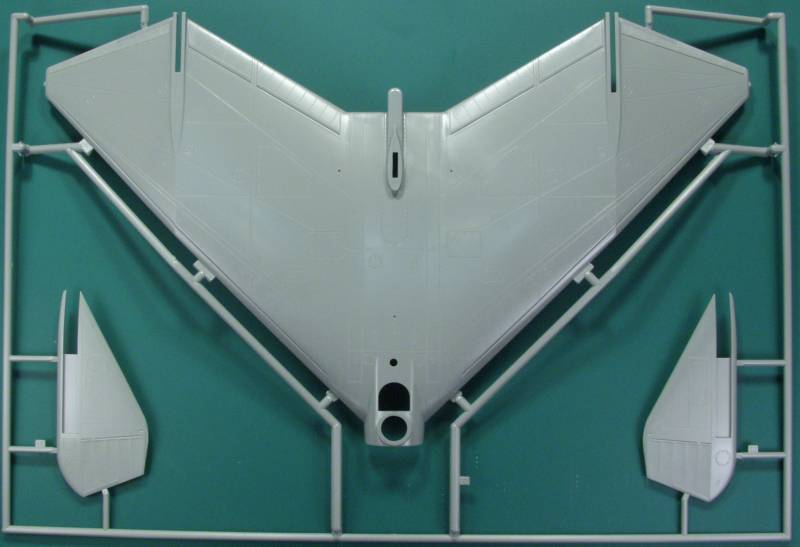
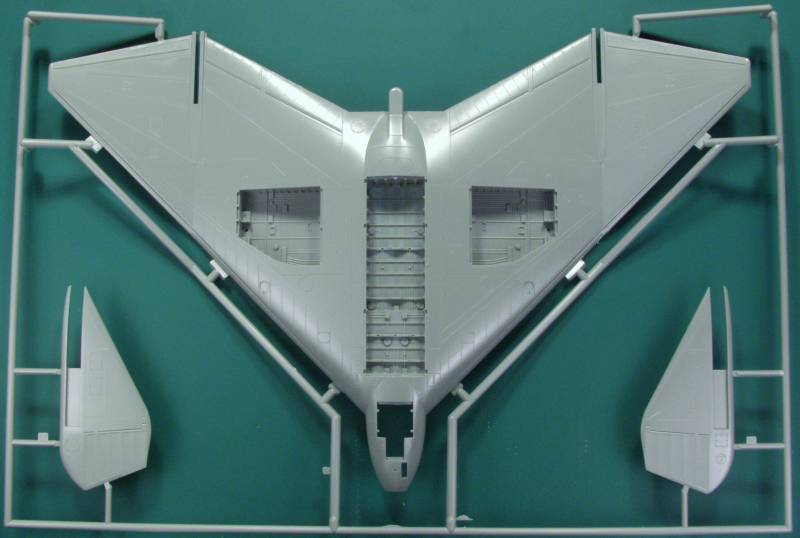
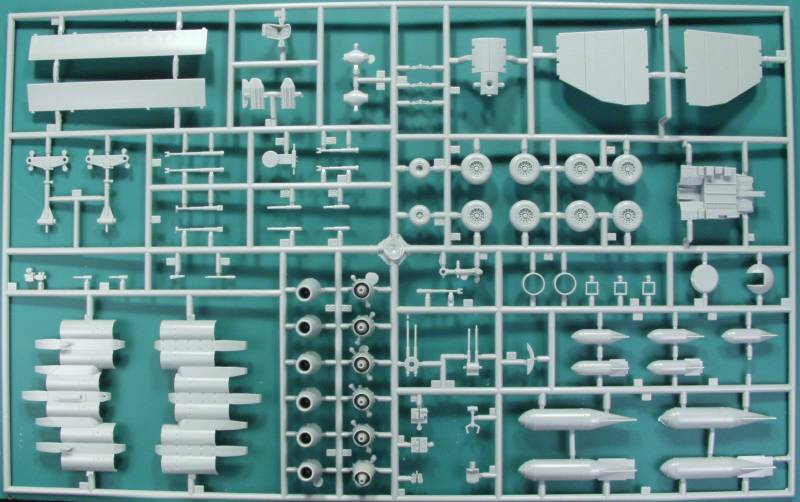
The clear parts are a little thick for the scale. The main canopy is very clear and has nice raised frame lines which should make masking easy. The top hatch is a separate piece to it could be displayed open. The other clear pieces are not as clear But due to their small size it's not that much of an issue. Altogether there are 8 parts in clear bring the total parts count for the kit to 101. See photo below.
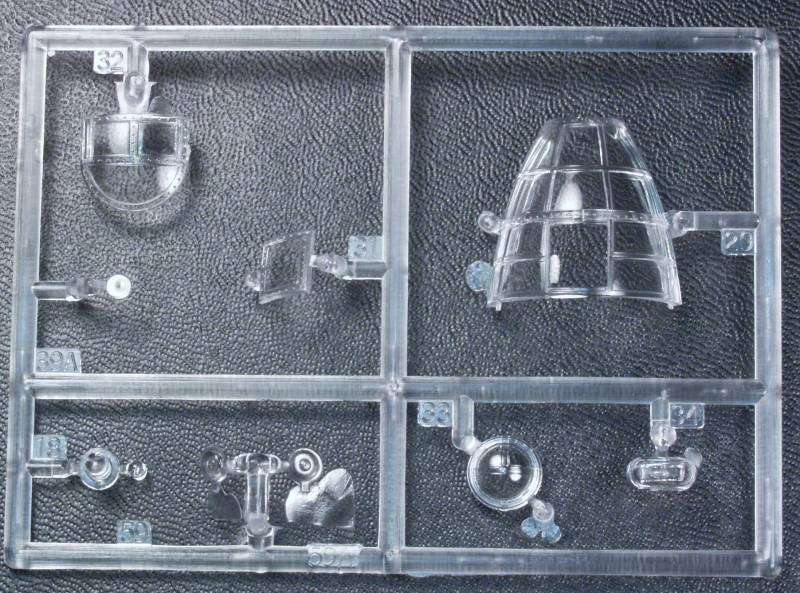
The decals include markings for two aircraft, one for KG 100 and one for KG 200, obviously fictitious. The decals have a flat finish and a fair amount of excess film but they are nicely registered and appear opaque. There is a great deal of stencils supplied. See below.
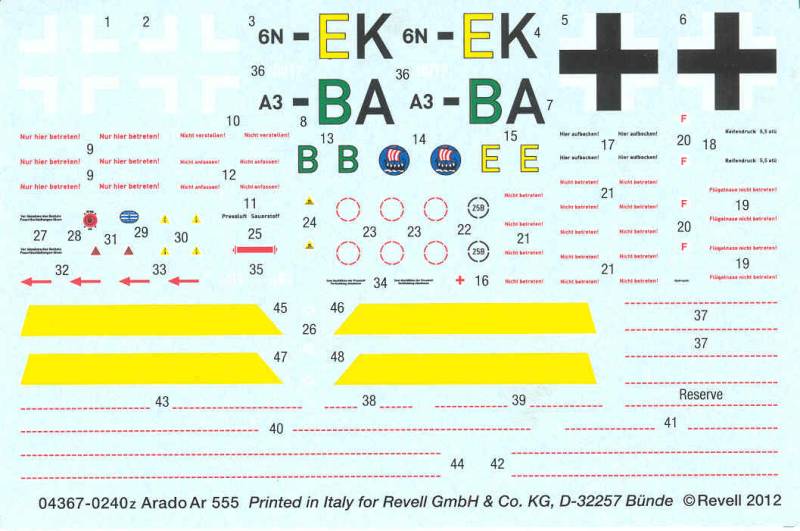
The instructions are in the form of a 12 page book in an A4 size. Page one has history and specifications in English and German, page two has basic assembly instructions in 21 languages plus general diagrams to go with the text, page 3 has a symbol chart in 18 languages plus safety warnings. page 4 has a multilingual paint chart with names and Revell paint numbers, page 5 is a parts chart and the first two assembly steps, pages 6 through 10 finish the assembly steps, pages 11 and 12 have the painting and markings diagrams.
After Market Goodies
None that I am aware of specifically for this kit however, after viewing some online builds of this kit I decided it would be neat to do an anti shipping attack aircraft along the lines of the Fw 200 Condor or He 177 Grief as used by KG 40 using their radio codes and world in a ring insignia. This required me to source some Hs 293 missiles and a Fritz X radio controlled bomb. This turned out easier than expected as Condor (a division of MPM) makes a set which includes two Hs 293s and one Fritz X bomb. The set also includes a Blohm und Voss L 10 gliding torpedo if you are so inclined.
The set comes in a plastic bag with a large cardboard header which has artist renditions of the three weapons included and on the back it has renditions of each of the weapons mounted on different aircraft. The set consists of one sprue of injected parts in a light gray plastic. This includes the bodies and large wing parts of the weapons. A photo etch fret is supplied which includes fins and small wings and control surfaces and other small detail parts. The instructions consist of an A4 sized sheet folded in half, one side has three panels, each showing the assembly of each weapon and three more panels with painting instructions and diagrams of how these would mount on various aircraft. The opposite side has a parts map, a paint chart listing paints by RLM number, FS number and numbers of Authentic, Humbrol, Molak and Tamiya paints. The plastic parts are well molded with a little flash showing. Panel lines are recessed. The sprue attachment points are huge and will require care when removing the parts from the sprues. See photos below.
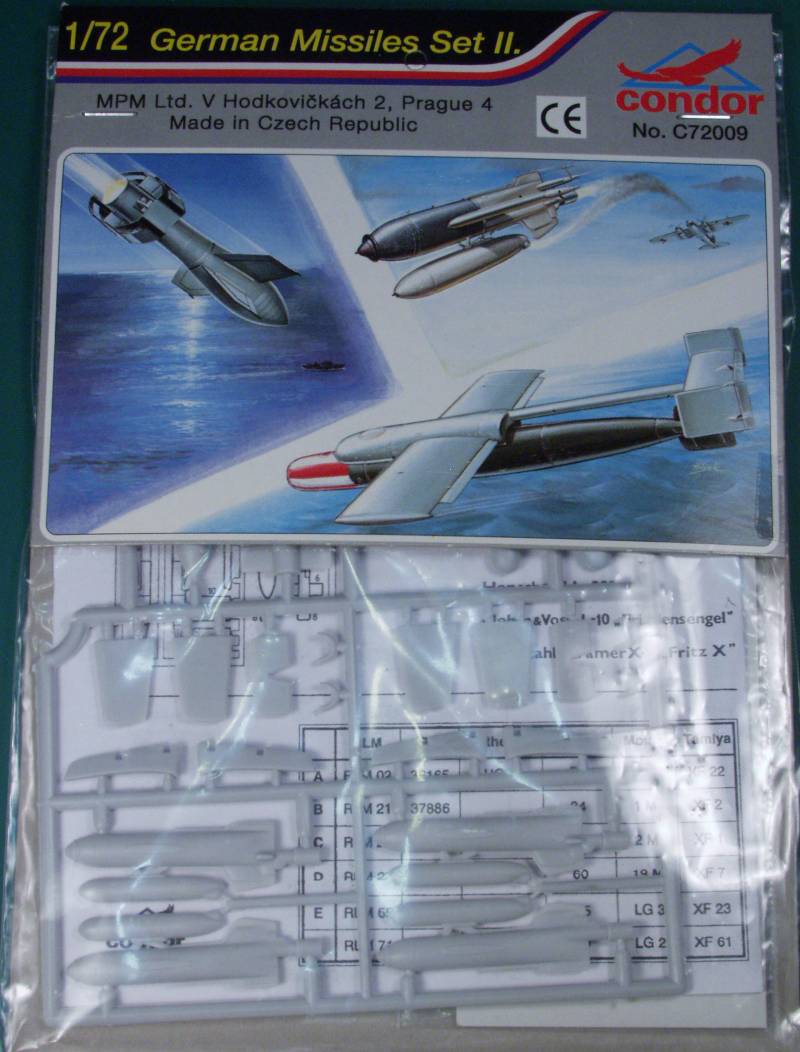
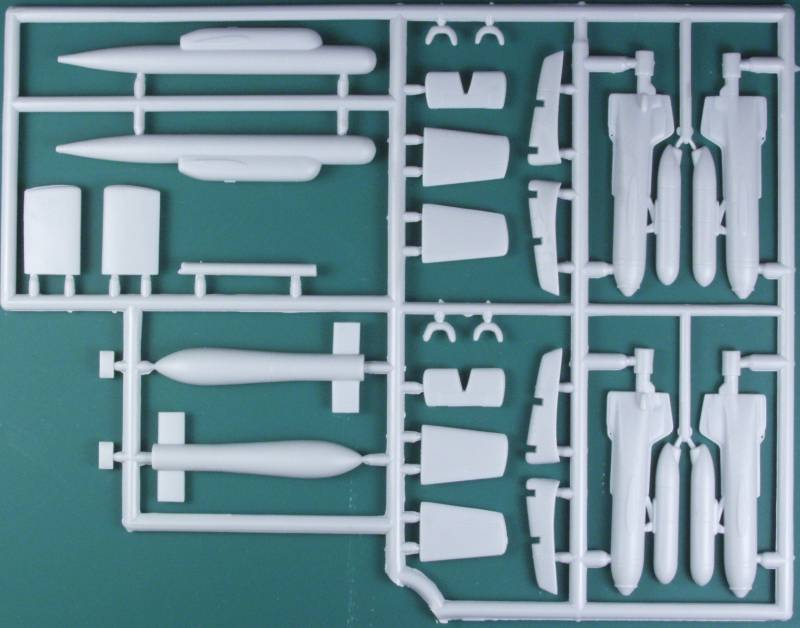
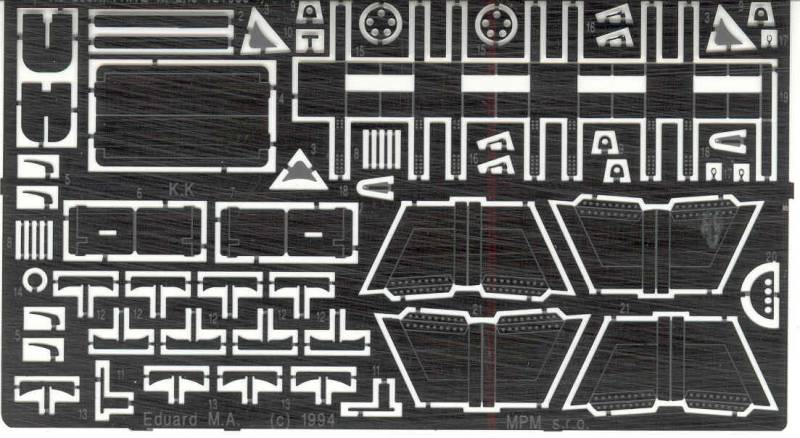
Conclusions
From all sources this kit gets good marks for fit and ease of assembly and looking at the parts in the box I would come to the same conclusion. Recommend to all skill levels.
Links to kit build or reviews
References
Back to the Misc 1/72 scale Aircraft page
The Build
As a preface to the build I'm going to provide an alternative history to go along with the kit...
Time
line: March, 1946, it has been over two years since the Soviet
Union
capitulated following the assassination of Stalin. With
Russiaís
vast resources available, the Third Reich was now
rejuvenated.
Not only were the raw materials to make war available but also
much
needed manufacturing facilities that would be out of range of
the
Allied bombers until such time as the B-35 and B-36 became
fully
operational.
Hitler foiled the Allied plans for an invasion by massing his
forces,
no longer needed in Russia, along the channel front. The
Luftwaffe, no
longer strapped by lack of fuel and resources continued to
make life
miserable for the Allies. With the metals needed to make more
powerful
and reliable jet engines available, the Luftwaffe was rapidly
re-equipping with second generation jet powered aircraft and
were
regaining control of the skies over Europe. The Allied
strategic
bombing campaign continued but worthwhile targets within range
were
becoming scarce and the new Luftwaffe jet fighters were
extracting an
increasingly higher toll on the Allied bombing fleet. The
Allied first
generation jet fighters were proving to be no match for the
second
generation German jets.
Hitler wanted to start rebuilding Germanyís cities but the
Allies
were in no mood to let that happen, so starting in March of
46, he
began a new campaign to blockade the British Isles. He had no
intention
of invading England, he just wanted the bombing to stop. For
over a
year new submarines had been had been coming out of the
Russian
shipyards and now that the new multipurpose jet bomber, the Ar
555 was
operational, it was time to put his plan in operation.
Although the Ar 555 was primarily intended as a long-range
bomber it
was easily modified into a weapons carrier for anti shipping
work. It
could carry two of the latest television guided Hs 293 anti
ship
missiles under the wings and not only conventional weapons but
also a
single Fritz X guided bomb internally as well. It was equipped
with two
30 mm cannons for strafing attacks and two remote controlled
gun
turrets with a pair of 20 mm cannons for self defense. It also
carried
the latest high frequency radar, which could not only track
surface
ships but give it early warning of approaching enemy aircraft.
Its long
range allowed it to roam the Atlantic nearly to the coast of
the US and
itís speed made it immune to all but the latest US jet
fighters.
Like most builds this one begins with the cockpit. For the scale the detail is quite good and most likely total fiction which just makes it that much more fun because it allows you to do what you want. The seats for the crew had seat belts and harnesses molded in but they looked a bit wimpy to me and would have been a chore for me to paint. Fortunately I had some 1/72 scale German bomber seat belts in my stash and decided to add them. Other than painting and highlighting the interior parts I did little else except add a throttle quadrant to the console next to the pilot. I also put drops of future on all the instruments. The results of my efforts are shown below prior to assembling the top and bottom fuselage halves.
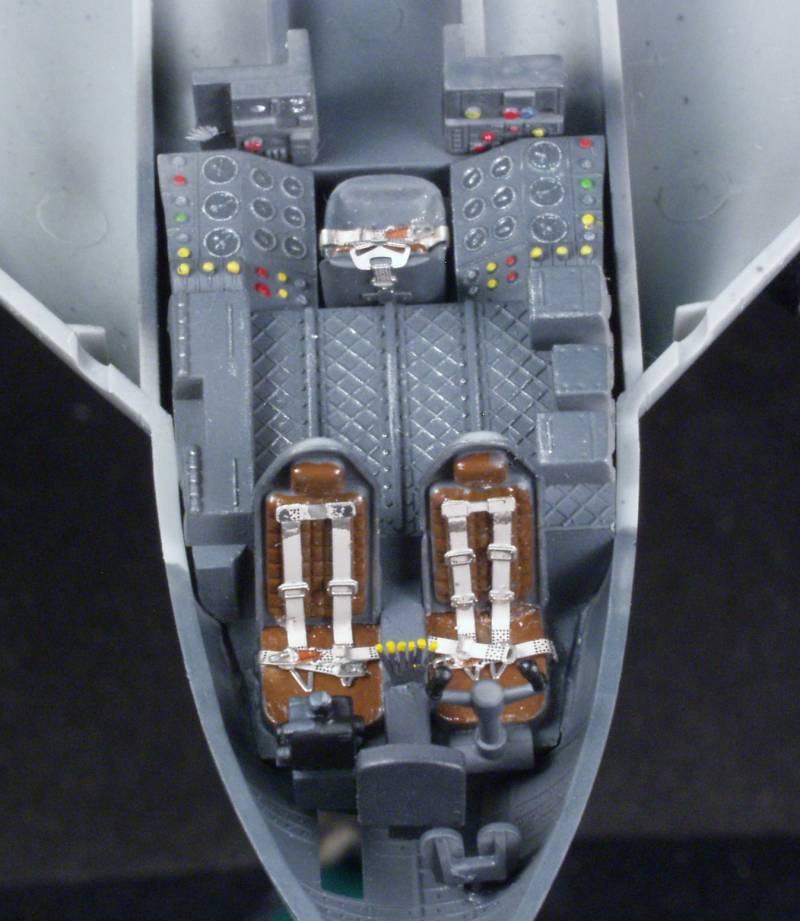
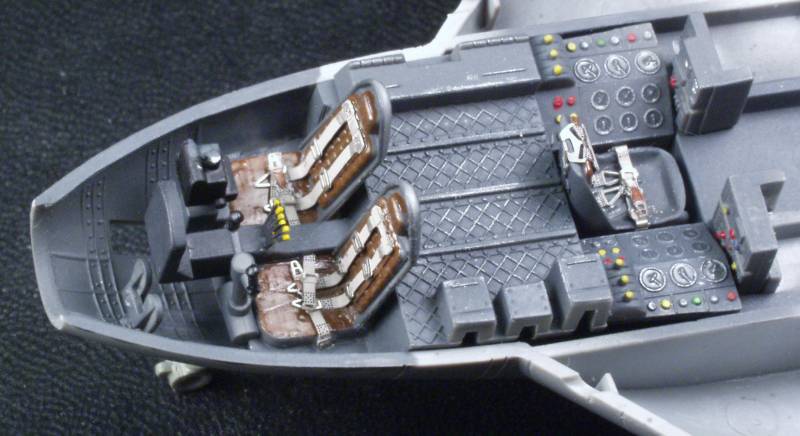
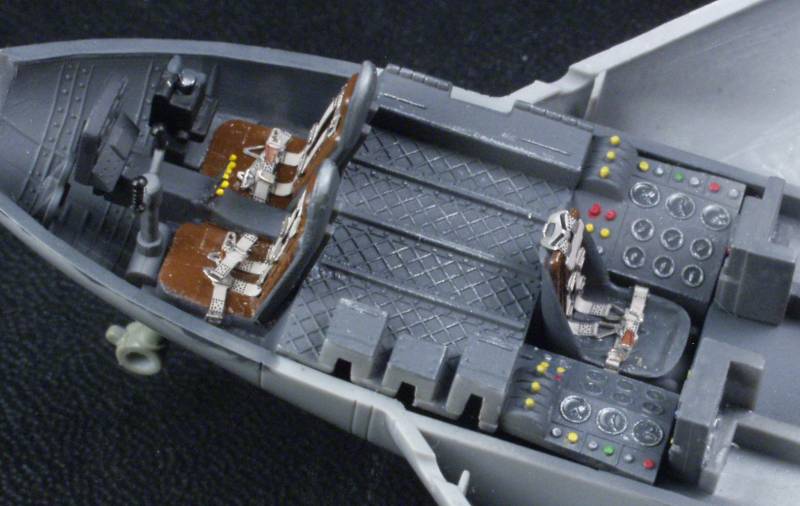
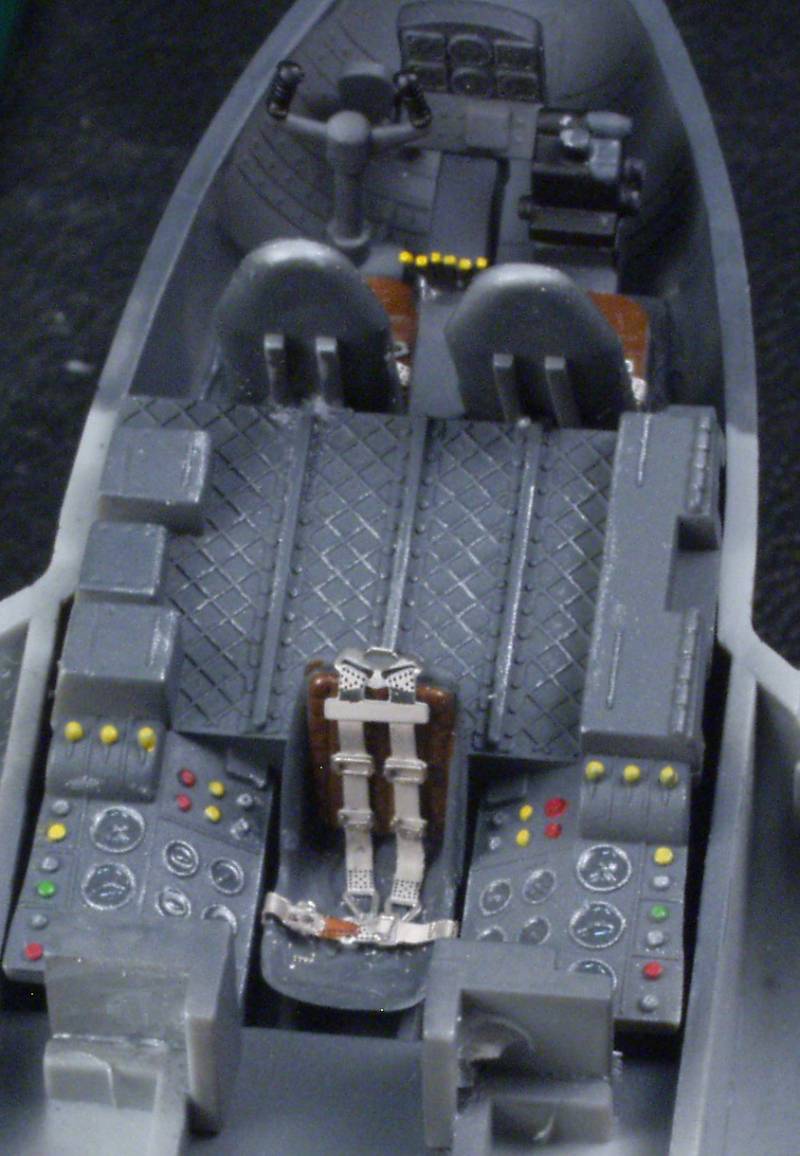
I didn't take a lot of in progress photos on this build but here are the photos of the completed model.
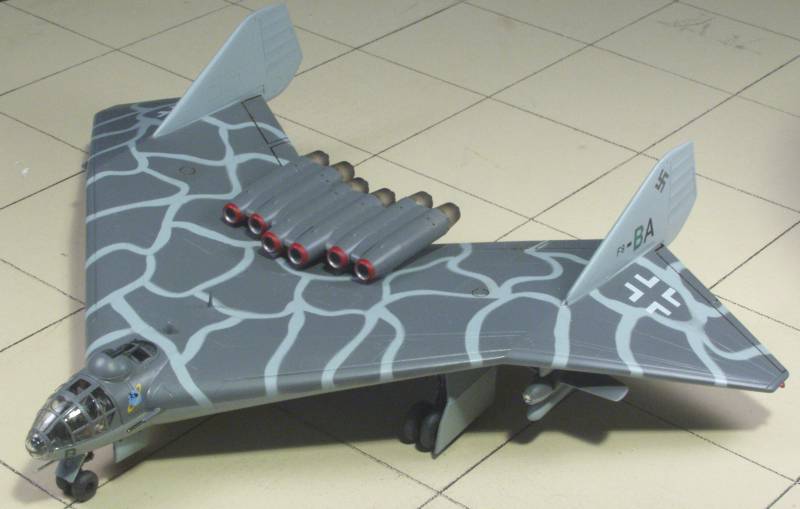
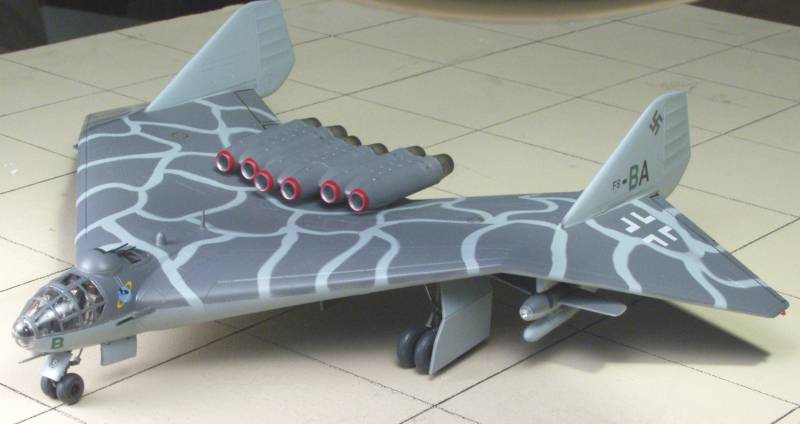
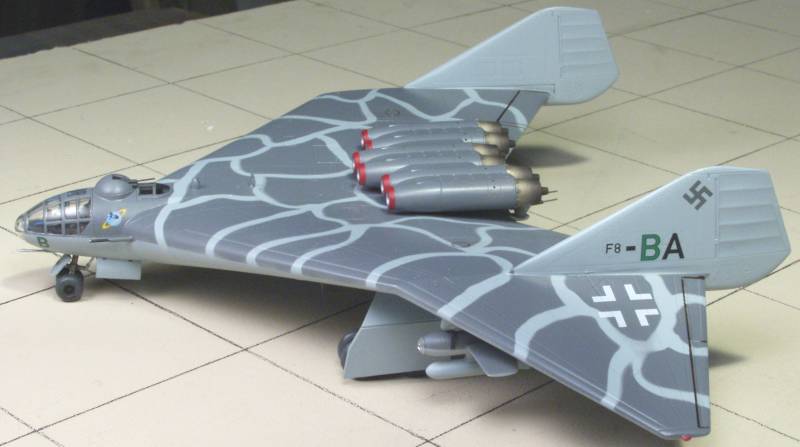
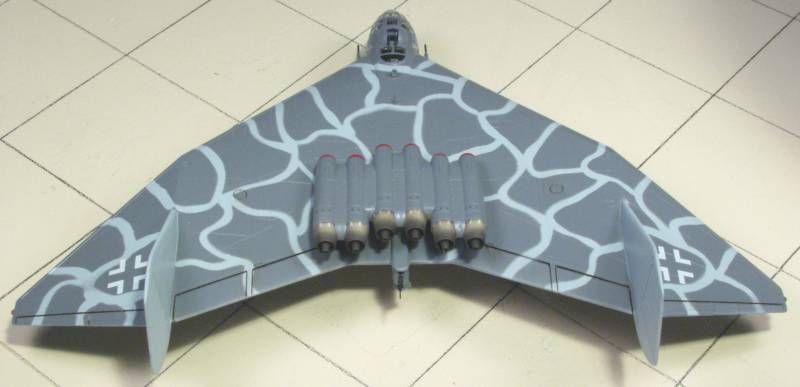
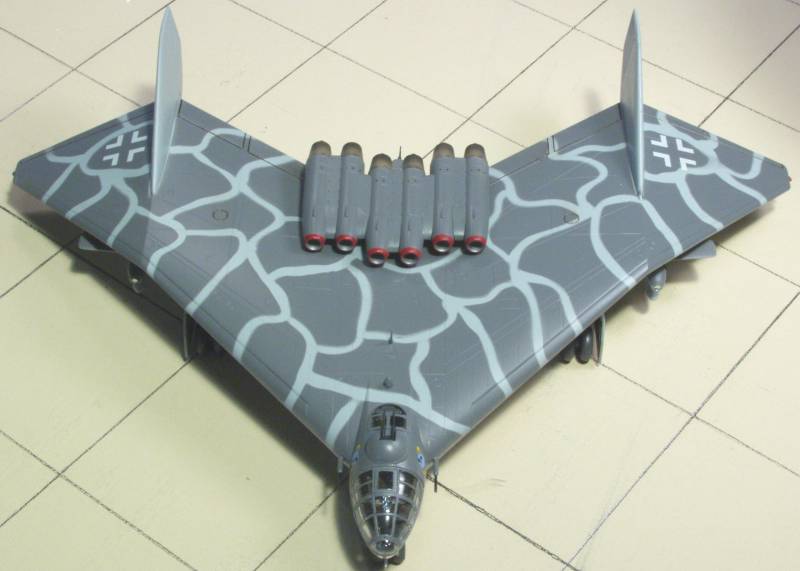
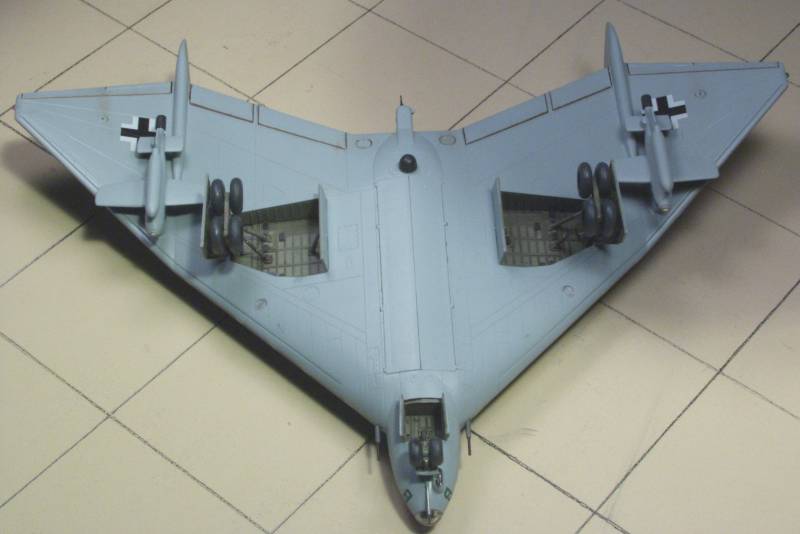
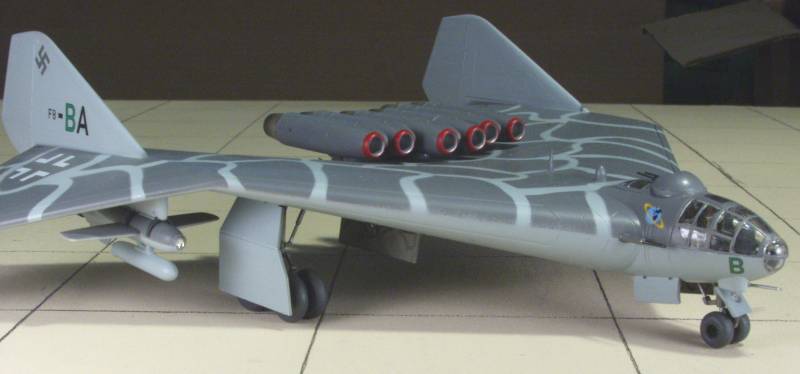
The model is seriously tail heavy and the recommended weight is barely enough to keep it on its nose. If you are going to build it with the bomb bay closed consider adding some additional weight in the forward section of it. It was a fun build and fit pretty well overall and would recommend to modelers of all but beginner levels.
Back to the Misc 1/72 scale Aircraft page
Updated 3/21/14